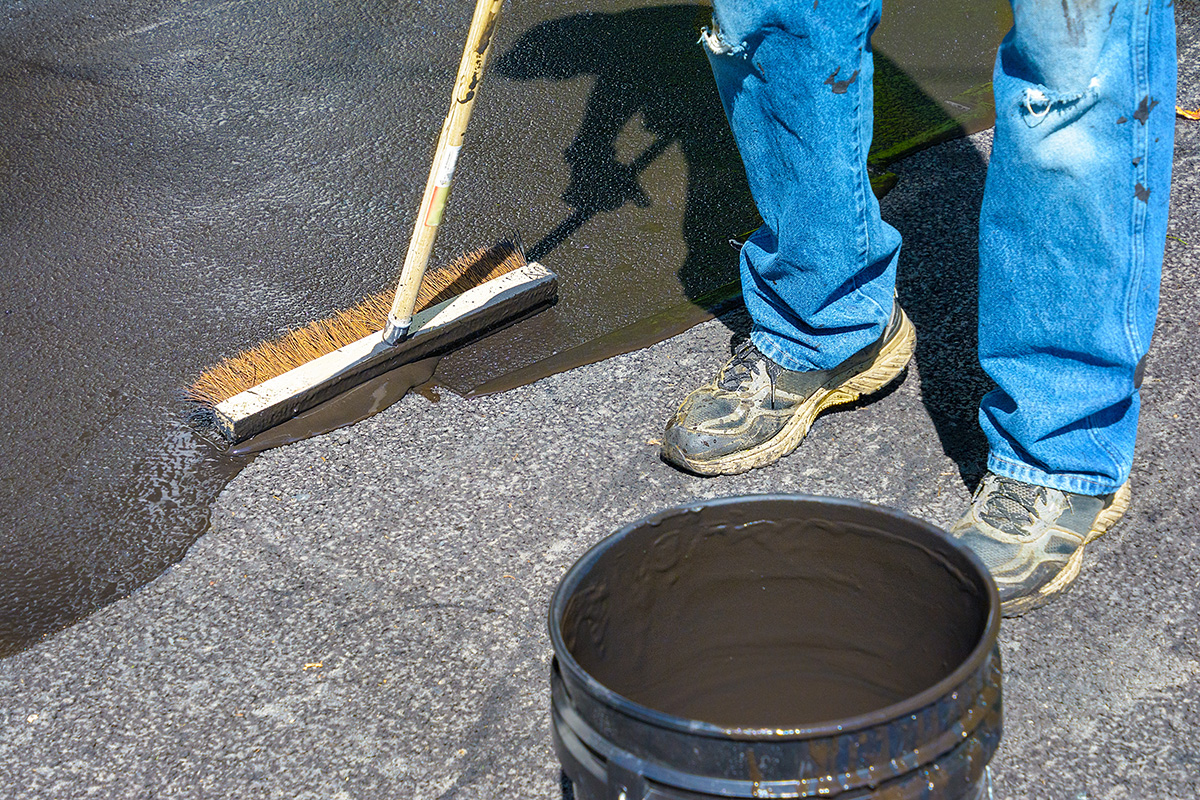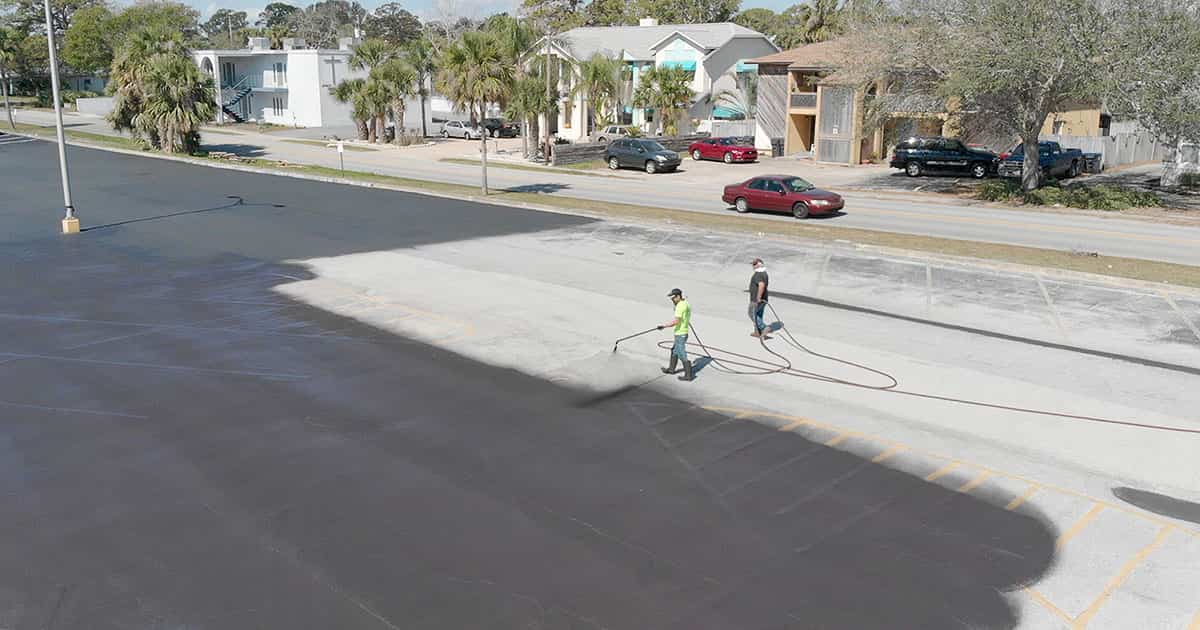Revitalize Your Home with Regrading and Asphalt Sealing Methods
Revitalize Your Home with Regrading and Asphalt Sealing Methods
Blog Article
Hot Mix Asphalt: A Lasting Service for Sidewalk
Hot Mix Asphalt (HMA) has become a leading lasting selection for pavement options, offering a myriad of ecological benefits and innovative innovations. Its capacity to reduce and reuse materials power consumption presents an engaging case for its fostering in road building jobs. The long-term performance and sturdiness of HMA make it a preferred choice for facilities development. As the demand for environmentally friendly building practices grows, discovering the nuances of HMA's sustainability can supply useful insights right into the future of pavement options.
Environmental Benefits of Hot Mix Asphalt

In Addition, Hot Mix Asphalt assists to reduce city heat island results. Its dark shade absorbs sunlight, decreasing the amount of heat showed back into the environment compared to lighter-colored sidewalks. This can decrease ambient temperatures in metropolitan locations, reducing the demand for air conditioning and eventually reducing power intake.
Furthermore, Hot Mix Asphalt adds to boosted stormwater administration. Its porous nature permits water to infiltrate the sidewalk and charge groundwater supplies, lowering runoff and the danger of flooding. These environmental benefits make Warm Mix Asphalt a lasting selection for leading roadways and freeways.
Power Performance in HMA Manufacturing
Is energy efficiency a crucial consider the production of Warm Mix Asphalt (HMA)? Definitely. Energy plays a significant function in the manufacturing of HMA, affecting both cost and ecological sustainability. One vital element of energy performance in HMA production is the use of cozy mix asphalt (WMA) modern technologies (angled parking). WMA enables the blending and positioning of asphalt at lower temperatures compared to traditional warm mix asphalt, causing minimized power intake during production. This procedure not only lowers gas usage however likewise reduces greenhouse gas emissions, making it a more eco-friendly alternative.
Additionally, advancements in plant modern technologies have brought about even more energy-efficient HMA manufacturing procedures. Modern plants are developed with functions like recycled asphalt sidewalk (RAP) handling abilities, efficient heater systems, and improved insulation, all adding to energy financial savings. By optimizing power usage in HMA manufacturing, the industry can lower its carbon footprint while keeping premium sidewalk materials. Power efficiency is, as a result, an important factor to consider in making certain the sustainability of Hot Mix Asphalt manufacturing.
Recyclability of Warm Mix Asphalt
The recyclability of Warm Mix Asphalt (HMA) is a critical element of its sustainability and lasting ecological impact. HMA is just one of one of the most recycled materials in the USA, with over 100 million heaps of redeemed asphalt sidewalk (RAP) being reused every year in new sidewalk construction. Reusing HMA offers several ecological benefits, such as minimizing the demand for virgin materials, decreasing energy intake throughout manufacturing, and reducing the quantity of waste sent out to landfills.
The procedure of reusing HMA entails crushing the existing pavement, crushing Web Site it into smaller pieces, and mixing it with new accumulation and asphalt binder to create a recycled mix. This recycled mix can usually execute in addition to or perhaps much better than traditional HMA, while requiring less resources and creating lower greenhouse gas discharges. By including RAP right into new sidewalk tasks, roadway agencies can conserve natural deposits, minimize expenses, and minimize the environmental footprint of roadway construction and maintenance activities. In general, the recyclability of HMA plays a significant role in promoting sustainable practices within the sidewalk market.

Long-Term Efficiency of HMA
Asphalt pavements demonstrate resilience and strength over a prolonged duration, reflecting the long-lasting performance of Hot Mix Asphalt (HMA) Furthermore, innovations in HMA technology, such as the use of polymer-modified binders and cozy mix asphalt, have actually better boosted the durability and long life of HMA pavements. By focusing on top quality building and maintenance practices, HMA proceeds to confirm itself as a affordable and sustainable solution for long-lasting pavement facilities.

HMA: Durability and Sustainability
Demonstrating both longevity and sustainability, Warm Mix Asphalt (HMA) has become a cornerstone in the building and construction of lasting sidewalk facilities - hot mix asphalt. HMA's longevity comes from its ability to hold up against heavy tons, harsh climate condition, and high website traffic volumes, making it a reliable choice for roads, freeways, and flight terminal paths. The structure of HMA, which commonly consists of aggregates, binder, and filler, plays a critical function in enhancing its durability and resistance to damage
In addition, HMA's sustainability depends on its recyclability and energy-efficient manufacturing process. The capability to recycle reclaimed asphalt pavement (RAP) in new HMA combinations reduces the demand a fantastic read for virgin products and decreases the environmental effect of pavement construction and maintenance. Additionally, the energy effectiveness of creating HMA depends on its reduced blending temperatures compared to other sidewalk products, causing minimized energy consumption and greenhouse gas emissions.
Final Thought
In verdict, warm mix asphalt (HMA) provides a sustainable solution for pavement with its eco-friendly qualities. HMA's recyclability, energy effectiveness in manufacturing, and long-term resilience make it an environment-friendly choice for road building. By preserving natural resources, minimizing waste, and lowering greenhouse gas discharges, HMA plays an important function in promoting sustainability in facilities development. Its capability to reduce city warmth island impacts additionally emphasizes its relevance in creating resistant and environmentally conscious sidewalk systems.
HMA is one of the most recycled materials in the United States, with over 100 million lots of recovered asphalt pavement (RAP) being recycled yearly in brand-new pavement building and construction.The process of recycling HMA involves crushing the existing sidewalk, squashing it right into smaller items, and blending it with new aggregate and asphalt binder to create a recycled mix.Asphalt sidewalks show longevity and durability over a prolonged duration, mirroring the long-term performance of Warm Mix Asphalt (HMA) In addition, innovations in HMA modern technology, such as the usage of why not try here polymer-modified binders and warm mix asphalt, have additionally boosted the toughness and durability of HMA sidewalks. The ability to reuse recovered asphalt pavement (RAP) in brand-new HMA blends lowers the need for virgin products and reduces the environmental impact of sidewalk construction and upkeep.
Report this page